 |
||||||||||||||||||||||||
 |
 |
|||||||||||||||||||||||
 |
||||||||||||||||||||||||
 |
 |
 |
 |
|||||||||||||||||||||
| 2015 CIRCLES | 2014 CIRCLES | 2013 CIRCLES | 2012 CIRCLES | |||||||||||||||||||||
|
||||||||||||||||||||||||
 |
 |
|||||||||||||||||||||||

|
Ground Report – Etchilhampton Hill (1), Wiltshire, 15/08/08The sheer size of this intricate formation is difficult to perceive from the roadside due to the relatively flat nature of the field as well as the distance. After a very long walk along tramlines into the field the shape begins to loom in front and the magnitude of the design becomes apparent. 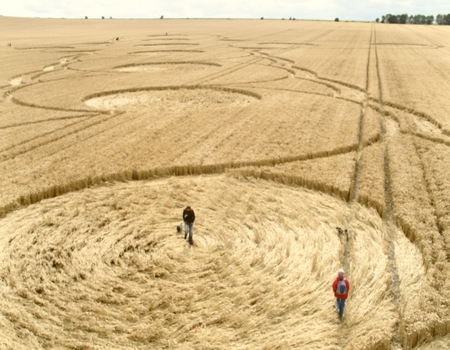 As can be seen in the image above, the far end of the ‘cruciform’ shape can barely be seen even after extending the pole to almost its full height (30 plus) and other visitors to the crop circle appear as mere dots close to the horizon! Inside the formation are some similarly impressive features, even if some of them do take a bit of finding! The general lay of the crop is fairly light and in places hardly seems to have been laid to the ground at all. The fact that this occurs particularly around the edges in many sections of the design add to the impact. 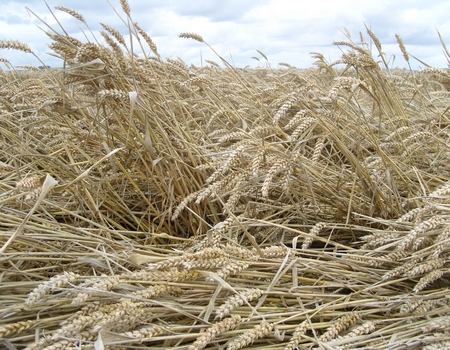 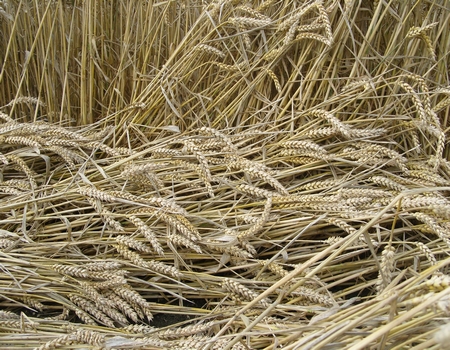 In some areas the half standing crop is a lot like that in the Wayland’s Smithy design earlier in the year, however, the more mature crop would normally lead to far less springing back up of stems that are laid. Standing curtains of crop around and next to tramlines running through the formation are another subtlety which occurs regularly as you walk through the design. In these areas the main flow of the crop appears to have been either ‘held up’ by only a few standing stems or redirected around them, after which the flow continues. 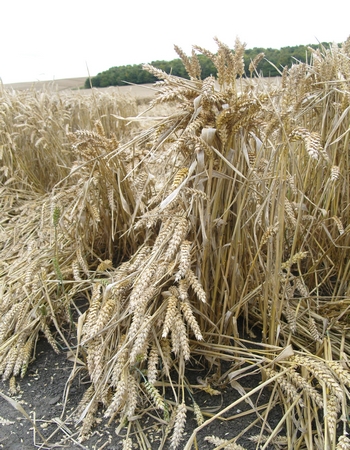 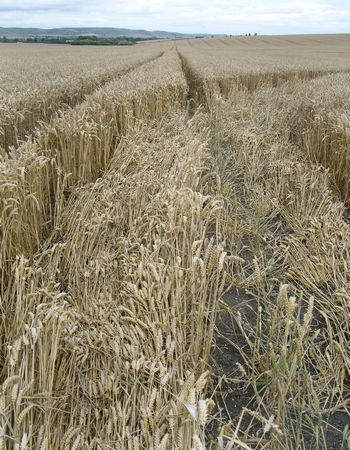 It is this level of intricacy which intrigues me as to imagine creating something on this scale, with this accuracy, in the dark and still manage to retain details such as these seems a remarkably tall order. At almost every junction between one direction of crop and another, or one feature of the geometric design joining another there are many examples of multi-layering, often creating distinctly raised and ‘bouncy’ swathes where crop flowing in one direction has been laid over the top of more. The image below shows one such area and also illustrates how much of the crop ‘follows’ a new direction as it joins the main flow. 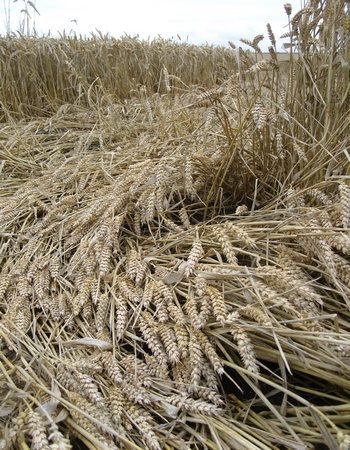 Many sections contain stems which are undamaged despite laying over ruts caused by tramlines or other depressions in the field. Damage to laid crop throughout the formation is generally minimal although there are areas where uniform crease marks are evident (see images below). 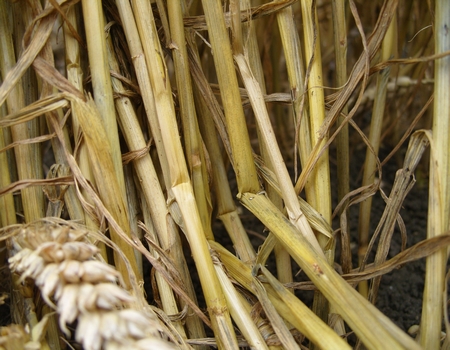 Unusually, there are also places where the laid crop reaches the end of the pathway it is creating and appears to have been bent at right angles so as not to cause errors in the design. These bends are not at nodes, but are towards the top of the stems rather than lower down as is more common. 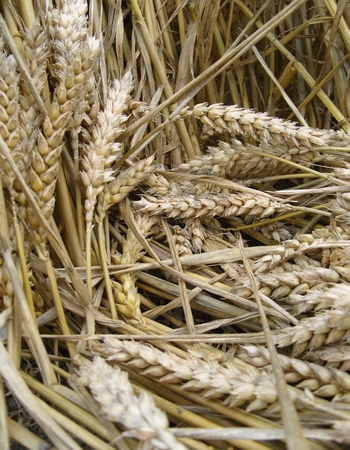 There are bent nodes present in some sections of the crop circle, with differences in their appearance and location. The images below show examples of nodes which appear very slightly elongated on the outer edge of the bend and below, where they seem to be softened to have allowed the bending to take place. 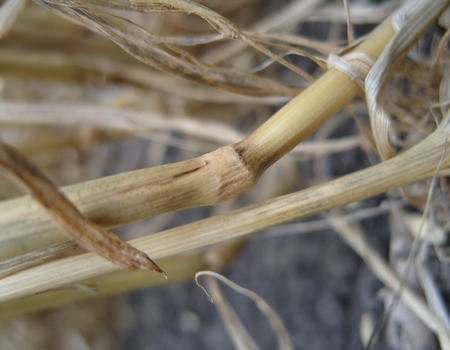 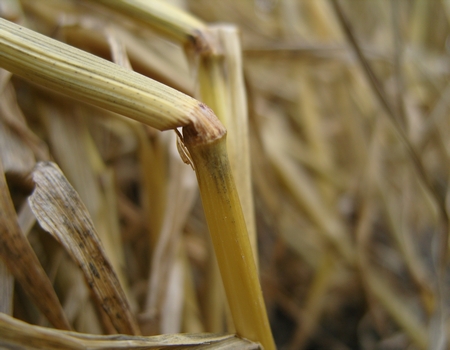 In the image below two adjacent nodes have been bent to allow this group of stems to bend first once and then again creating an obviously unusual effect. 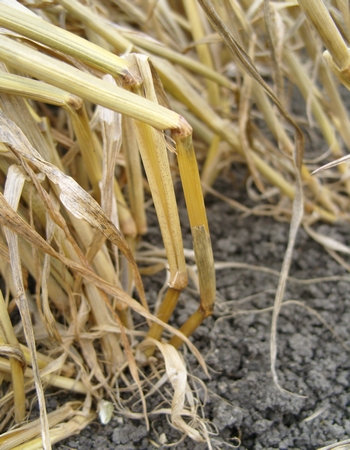 The general flow of the crop around the whole of the design is very fluid between all sections and despite the relative dryness and ripeness of the wheat a light and fluffy texture is created. 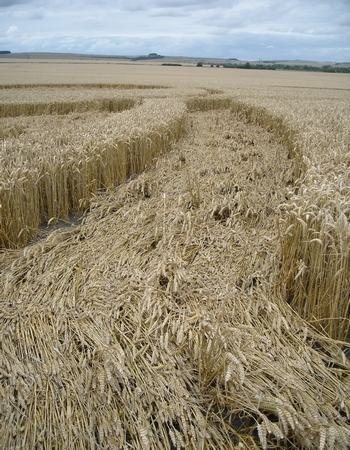 In my opinion this really is something special and another of those formations which truly raises questions about the possibilities during the limited hours of darkness even this late in the season! 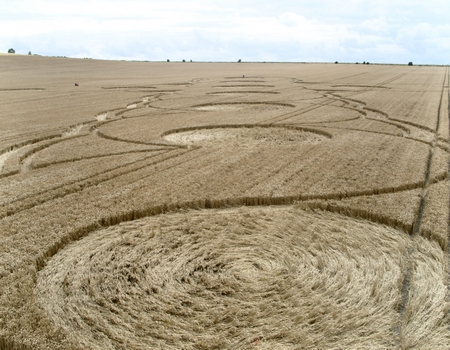 Crop Circle Summary
Alternative Websites |

